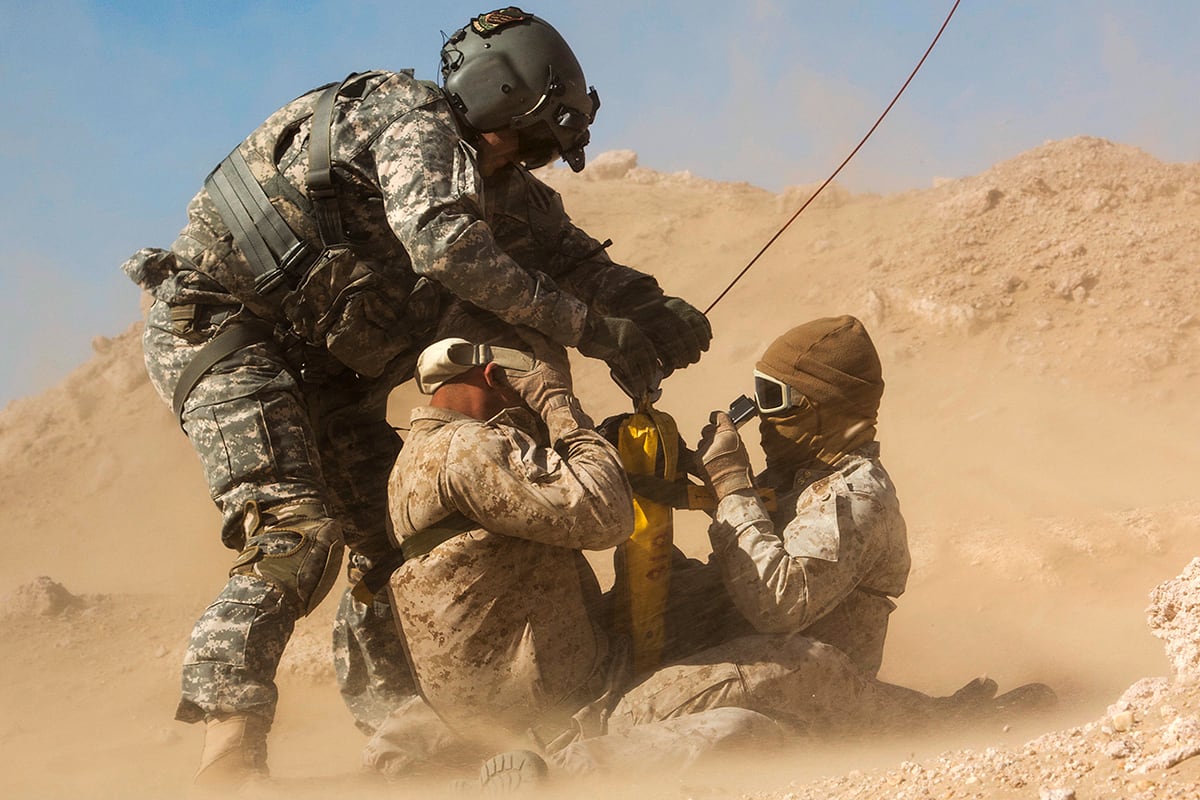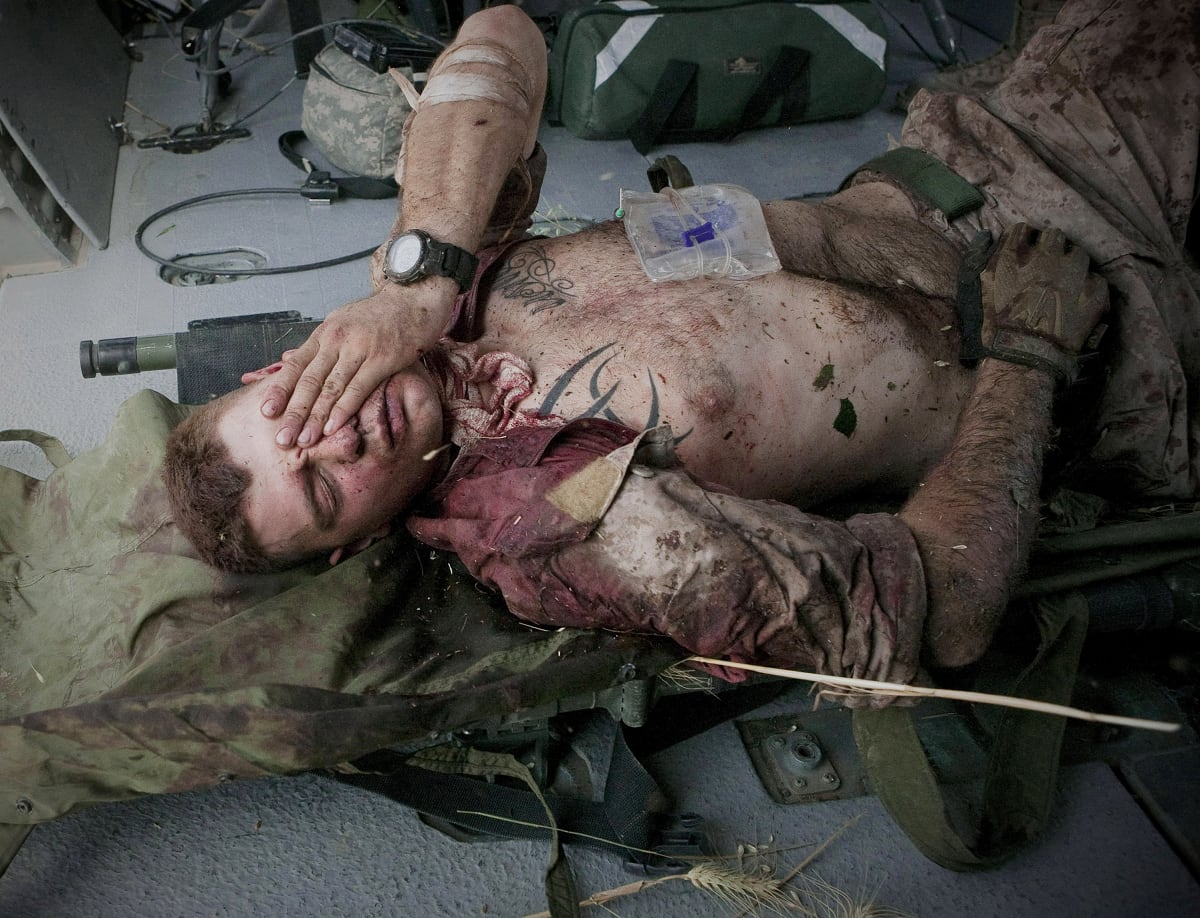A lifesaving Defense Department policy that whisks wounded troops off the battlefield to lifesaving care within the first hour of injury is a luxury Marines may not have headed into the next big fight.
The policy is credited with a near 98 percent survival rate, Rear Adm. Colin G. Chinn, Joint Staff surgeon, told audience members at a Navy medical symposium held at Marine Corps Base Quantico, Virginia, on Wednesday.
But as the U.S. is facing more capable adversaries, it’s a promise the Defense Department no longer believes it can keep.
“The last 15 years of war we pretty much adapted to the operational environment and dominated it,” Chinn said. “We are not going to have all the advantages we have now.”
Chairman of the Joint Chiefs, Gen. Joseph Dunford, relayed his concerns about the ‘golden rule’ last week to Chinn, the admiral said.
The ‘golden hour’ policy was put in place by then-Secretary of Defense Robert Gates in 2009 in an effort to stem the tide of increasing battlefield casualties. It was a promise by the DoD to surge medical assets and rotary wing support to the battlefields of Iraq and Afghanistan to save the lives of troops wounded in action.
For the past 15 years the U.S. military has dominated the battlefield, allowing U.S. forces to set the time and space for hostilities. U.S. forces controlled the terrain, and were afforded the ability to move medical assets when and where they wanted.
“But in a future fight that may not be the case,” Chinn said. “We need to be ready now. You fight tonight with what you have.”

Rising adversaries like Russia, China and North Korea are investing heavily in new missile technology and advanced weapon systems to contest the U.S. in hot spots and choke points around the globe.
In the next big war, the Corps is going to have to “fight to get to the fight,” Gen. Robert B. Neller, the commandant of the Marine Corps, has said.
Ensuring proper medical care for U.S. troops and Marines in this environment is an issue the Joint Chiefs are taking seriously: “We’ve been focusing on the Korea question the last several months,” Chinn said.
Senior U.S. military leaders are working to find and identify current gaps in medical planning and capabilities before the next big fight breaks out.
“Our potential problem is air lift capacity, in certain scenarios we are not going to have enough capacity and so as opposed to right now, we are going to have to hold onto those patients much longer,” Chinn said.
There are other problems too ― medical gear isn’t always uniform across the services.
A Marine wounded on the battlefield and patched up by a Navy doc on the ground may find his medical equipment isn’t interoperable with the Army or Air Force as he’s moved through different echelons of care.
“We need to solve that problem,” Chinn said.
Shawn Snow is the senior reporter for Marine Corps Times and a Marine Corps veteran.





